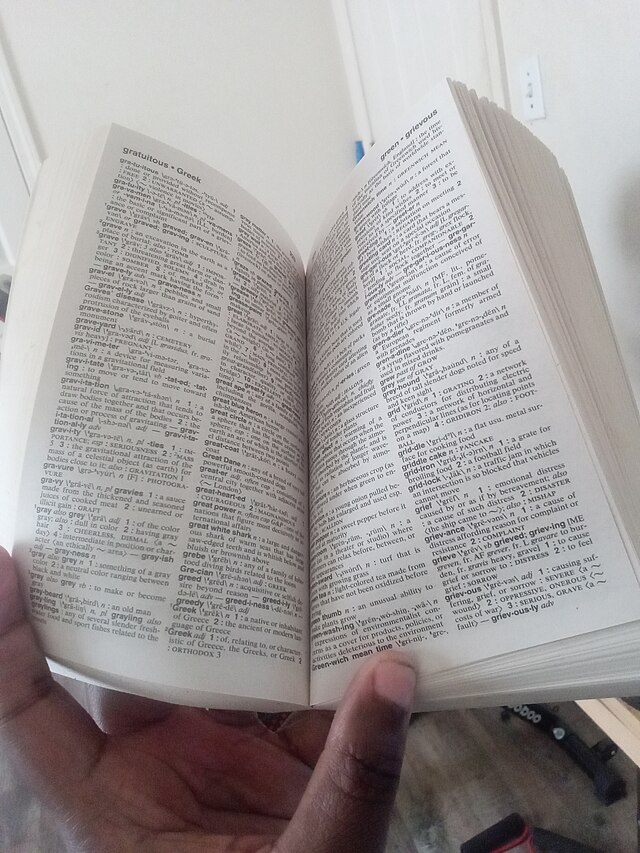
A Short History Of Writing: Part 2
The Development Of The Dictionary
We’ve gone over just how writing and words came about, but naturally, because of the expansion of humans as a species, the number of words unsurprisingly grew along with us. With every new tribe, empire, and era came a whole host of new things to name. In part one, we looked at the beginnings of the written word. In the many years since its introduction, the written word only continued to grow as it found more and more uses as time went on. New words, rules, and ways to use them were constantly being added to written language. And with this human trait of documenting and keeping track of things, there came the inevitable point where it seemed a good idea to collate these wild and unruly words and bring them into some semblance of order. As a result, we got something that has become a staple of our existence ever since… the English dictionary. But just how did it come about?
To be clear, the English dictionary isn’t the first dictionary, there are instances of dictionaries from Sumerian times, with the oldest surviving being a Chinese one from the 3rd century BCE. However, the foundations for the language we have today in the Oxford English Dictionary were laid over 400 years ago, all thanks to a school teacher named Robert Cawdrey.
Teachers Have All The Good Ideas
During the Renaissance period, there were by now a lot of words floating about, with even more so flooding in over the 16th century (Many the result of a certain playwright by the name of William Shakespeare). With such limited communication, there was little way to convey meaning over distance. Even nowadays, there are region-specific terms for things that persist—depending on where you are you might ask for anything from a chip cob or a chip roll in your local chippy. Back then it was much bigger problem, as any number of words could have regional variations, as well as new words entirely unknown to large parts of the country.
Robert Cawdrey was quite concerned by this and took it upon himself to do something about it. He set out to prevent people from becoming confused and remind the wealthy of their mother tongue, as they were adopting foreign words and phrases. Cawdrey set out to create a guide to explain the plethora of new English words derived from the Hebrew, Greek, Latin and French that were fast absorbing into the language. His work produced the first dictionary, the Table Alphabeticall. Or to give it its full title: A table alphabeticall, containing and teaching the true writing, and understanding of hard vsuall English wordes, borrowed from the Hebrew, Greeke, Latine, or French, &c. With the interpretation thereof by plaine English words, gathered for the benefit & helpe of ladies, gentlewomen, or any other unskilfull persons. Whereby they may the more easilie and better vnderstand many hard English wordes, vvhich they shall heare or read in scriptures, sermons, or elswhere, and also be made able to vse the same aptly themselues.
Bit of a mouthful, isn’t it?
His ‘dictionary’ ended up with 2,543 words, each with a definition that helped explain the life and development of the language at the time. It’s proven to be such an insightful tool for understanding the language of the period that it’s back in circulation today. There were just two problems with Cawdrey’s work: the first was that it focused purely on the more awkward and difficult words. The second was that he refrained from calling it a dictionary. As such, he has been largely overlooked by history. Several others tried to better Cawdrey’s effort, such as Nathan Bailey in 1721. But it was Samuel Johnson who is credited with being the creator of the first dictionary in 1755, some 150 years after Cawdrey’s Table.
The Bookseller’s Son
The son of a poor bookseller, after a brief stint at Oxford University, Samuel Johnson made a living writing periodicals and poetry while he compiled his magnum opus: A Dictionary of the English Language. He wrote it in order to make English and reading accessible to everyone. His dictionary addressed English as it was written and spoken—the first to do so. It was also the first to enforce a standard of spelling and grammar, as the language was rather unruly at the time.
It was a hefty book as well. The original comprised over 42,000 entries with over 110,000 literary examples. It was printed on the finest paper available on pages eighteen inches in height—only the Bible at the time got such treatment. It was a feat that took him and his assistants nine years to complete, commissioned by several publishers to do so to rival the French. The English couldn’t be outdone by them now, could they?
History’s Bestseller
Johnson’s dictionary set a new standard for the language and helped to standardise the language across the colonies for the next hundred years. However, towards the end of the 19th century, the colonies, technology, and language had evolved massively, and Johnson’s dictionary was becoming outdated. His work became the foundation of a new effort by the Philological Society of London to create a new dictionary that would include every word in the language from its earliest records to what it was at the time. This led to the creation of the Oxford English Dictionary in 1884. The OED has existed ever since and is constantly updated and published today. You’ll find it everywhere, in schools, libraries, and online.
This is the 2nd of 3 articles and next, we’ll delve into writing and words in the digital age, and the effect modern technology has had on our language.
If you want to study English or English Literature, Oxford Open Learning offer the chance to do so at a number of levels, listed below.